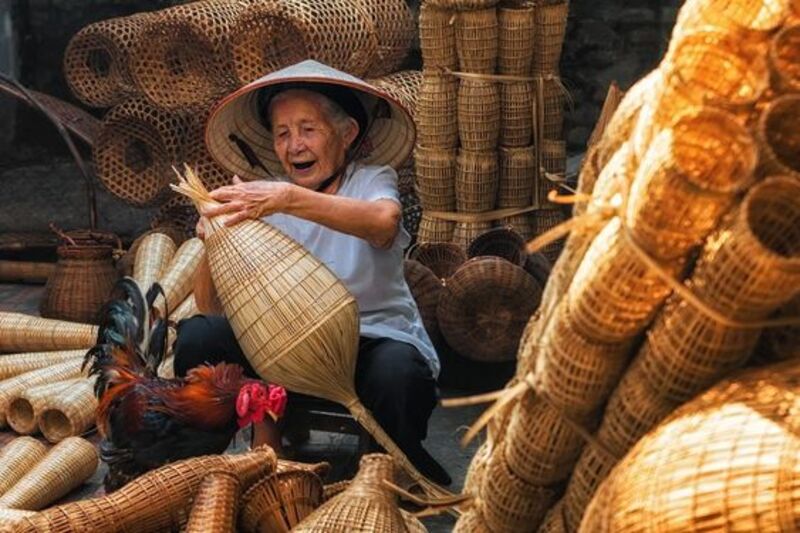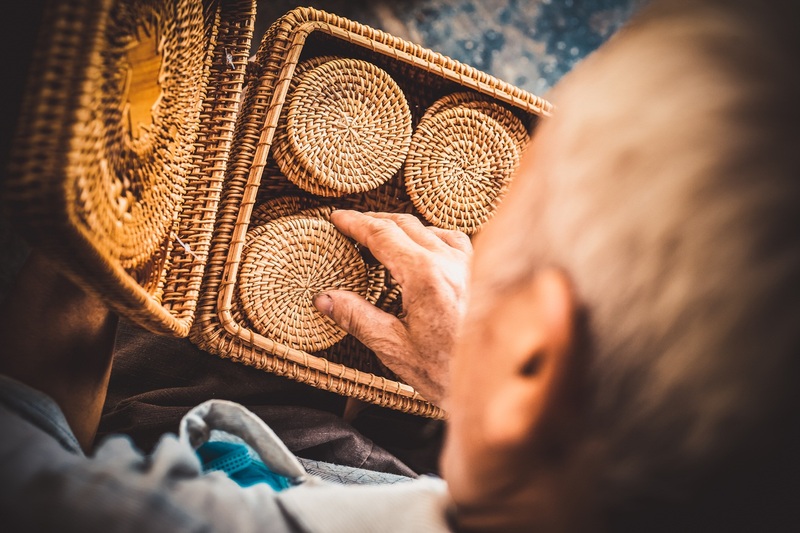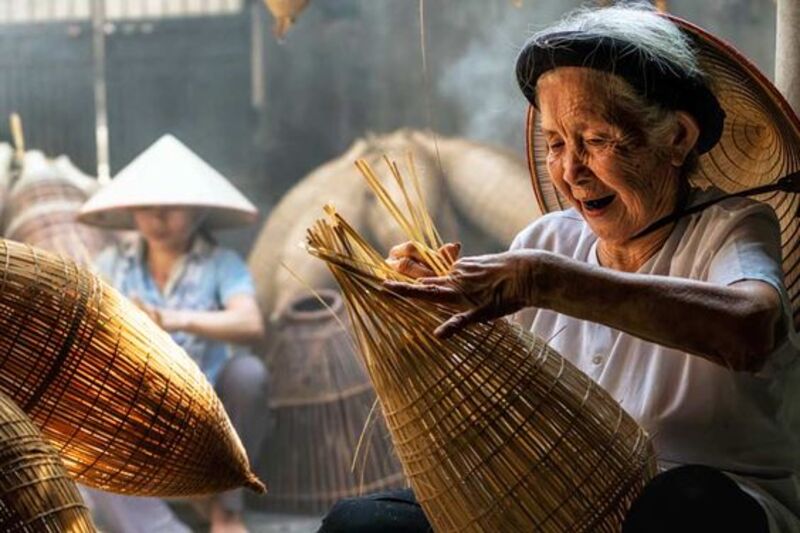No products in the cart.
Blog
Handcrafted In Vietnam The Beauty Of Skilled Artistry
Dive into the enchanting world of handcrafted in Vietnam, a treasure trove of artisanal brilliance where age-old craftsmanship meets contemporary design. Vietnamese artists create beautiful works of art out of ordinary materials like bamboo, silk, and lacquer, from the busy markets of Hanoi to the tranquil countryside of Hoi An.
This blog highlights the cultural relevance and influence of Vietnamese artists on interior design by delving into their distinctive craftsmanship, which ranges from colorful silk lanterns to complex lacquerware.
What are Some Unique Characteristics of Vietnamese Handicrafts?

Vietnamese handicrafts stand out for their intricate designs and painstaking attention to detail. Materials including bamboo, silk, wood, and lacquer are frequently utilized. Using centuries-old methods that have been passed down through the years, artisans create works that represent cultural and personal narratives.
Often used to represent regional tales, landscapes, and life philosophies, vivid colors and complex patterns are used.
Key Elements of Vietnamese Interior Design
Any room gains warmth and authenticity when Vietnamese handicrafts are incorporated into the interior design. Key elements include:
- Natural materials: Vietnamese interior design extensively uses materials like bamboo, wood, rattan, and silk. These materials are not only locally sourced and sustainable but also add a natural, earthy feel to the interiors.
- Neutral color palettes: Often inspired by the natural landscape, the color schemes in Vietnamese interior design tend to be soft and neutral, with shades of brown, green, and beige. These are occasionally accented with brighter colors like red or yellow to add vibrancy.
- Artisanal elements: Handcrafted items such as ceramics, textiles, and lacquerware are integral to Vietnamese interiors. These features frequently use historic motifs and techniques, providing cultural richness and artistic value to the room.
- Indoor-outdoor connection: Reflecting the Vietnamese appreciation for nature, interior design often includes elements that blur the line between indoor and outdoor spaces. Large windows, indoor plants, and water features are commonly used to bring the outdoors inside.
- Functional art: Many Vietnamese interior design elements are functional as well as aesthetic. Furniture and decor are designed to be used daily, combining practicality with beauty.
- Cultural motifs: Symbolic motifs such as dragons, lotus flowers, and phoenixes are prevalent in decorative elements. These motifs carry significant cultural meanings, representing strength, purity, and renewal.
- Minimalism with detail: While many aspects of Vietnamese design lean towards minimalism for a clean and uncluttered look, detailed craftsmanship in things like wood carvings and woven textiles adds layers of texture and interest.
The combination of these components results in a calm and culturally rich Vietnamese style.
Vietnamese Handicraft History
Vietnamese handicrafts have a millennium-long tradition, with distinct regional specialties emerging over time. For example, the intricate silk weavings of Van Phuc, the fine ceramics of Bat Trang, and the lacquer art of Ha Thai have all gained international recognition.
This rich history reflects the diverse influences that have shaped Vietnam, from indigenous cultures to Chinese, French, and American interactions.
Handcrafted in Vietnam and More Things that We Should Know

While investigating Vietnamese handicrafts, it’s critical to acknowledge the part that local communities play in maintaining these artistic expressions. Many villages are dedicated to a specific craft, supporting not only the local economy but also educational and social initiatives through craft production.
Handmade Vietnamese Decorations
Vietnam’s handmade decorations range from handwoven textiles to hand painted vases and beautifully carved wooden furniture. These pieces are frequently created utilizing sustainable processes, indicating an environmental conscience in the making process.
Popular Vietnamese Decor Items
The following well-liked Vietnamese décor pieces are regularly selected to improve the visual appeal of areas.
- Lacquerware: Items such as trays, boxes, and vases known for their glossy finish and durability.
- Silk lanterns: Colorful lanterns, particularly from Hoi An, that add a festive and warm ambiance.
- Bamboo furniture: Lightweight, durable, and sustainable options including chairs, tables, and shelving units.
- Ceramic pottery: Beautifully glazed pots, bowls, and vases from regions like Bat trang, known for their quality and craftsmanship.
- Embroidered textiles: Wall hangings, tablecloths, and pillows with elaborate needlework.
- Rattan baskets: Versatile and aesthetically pleasing, used for storage or as plant holders.
- Wood carvings: Detailed sculptures and furniture pieces that showcase the skill of Vietnamese woodworkers.
These objects not only serve practical purposes but also infuse a touch of Vietnamese culture into home decor. Discover a diverse range of such unique items and more at WipartisanVN.
What is the Impact of Vietnamese Culture on Decor?

The impact of Vietnamese culture on decor is significant, influencing both the aesthetics and the symbolism within various design elements. Here’s how:
- Cultural storytelling: Decor items often depict stories from Vietnamese mythology, history, and folklore, serving as both art and a narrative medium.
- Symbolism: Many decor pieces incorporate symbols like the lotus for purity, dragons for strength, and bamboo for resilience, each adding layers of meaning to the interior spaces.
- Craftsmanship heritage: The long-standing traditions of craftsmanship, such as lacquer art, pottery, and weaving, reflect a deep respect for artisanal skills passed down through generations.
- Harmony with nature: The use of natural materials and motifs in decor generally stresses a seamless fit with the natural world, encouraging serenity and tranquility.
- Community and sustainability: Many Vietnamese decor practices support local communities and sustainable methods, ensuring economic and environmental well-being.
- Spiritual elements: Incorporation of items like incense holders or Buddhist statues in decor not only adds aesthetic value but also spiritual significance, reflecting the religious practices of many Vietnamese people.
Vietnamese decor is unique due to these influences, which infuse daily living areas with profound cultural, spiritual, and historical importance.
Conclusion
Handcrafted in Vietnam combines a rich cultural legacy with a distinctive modern appeal, showcasing the extraordinary skill and inventiveness of its artists. Accepting these magnificent items not only makes your décor look better, but it also helps the communities who produce traditional workmanship. Experience the classic elegance of Vietnamese handicrafts and add their unique craftsmanship to your house.
Hello, I am Althea Stone, a devoted enthusiast of handicrafts, finds solace and creativity in the intricate artistry of handmade goods. My passion for crafting extends beyond mere hobby, serving as a gateway to self-expression and a means to infuse everyday life with beauty and ingenuity.
